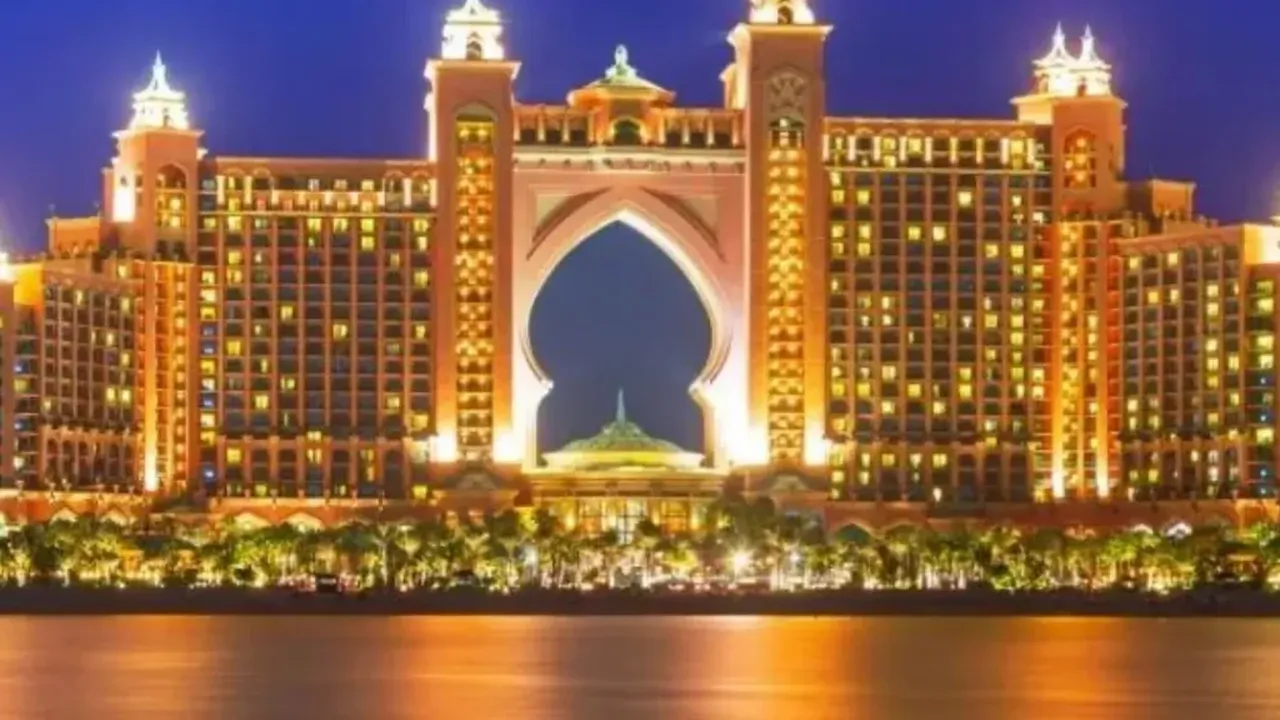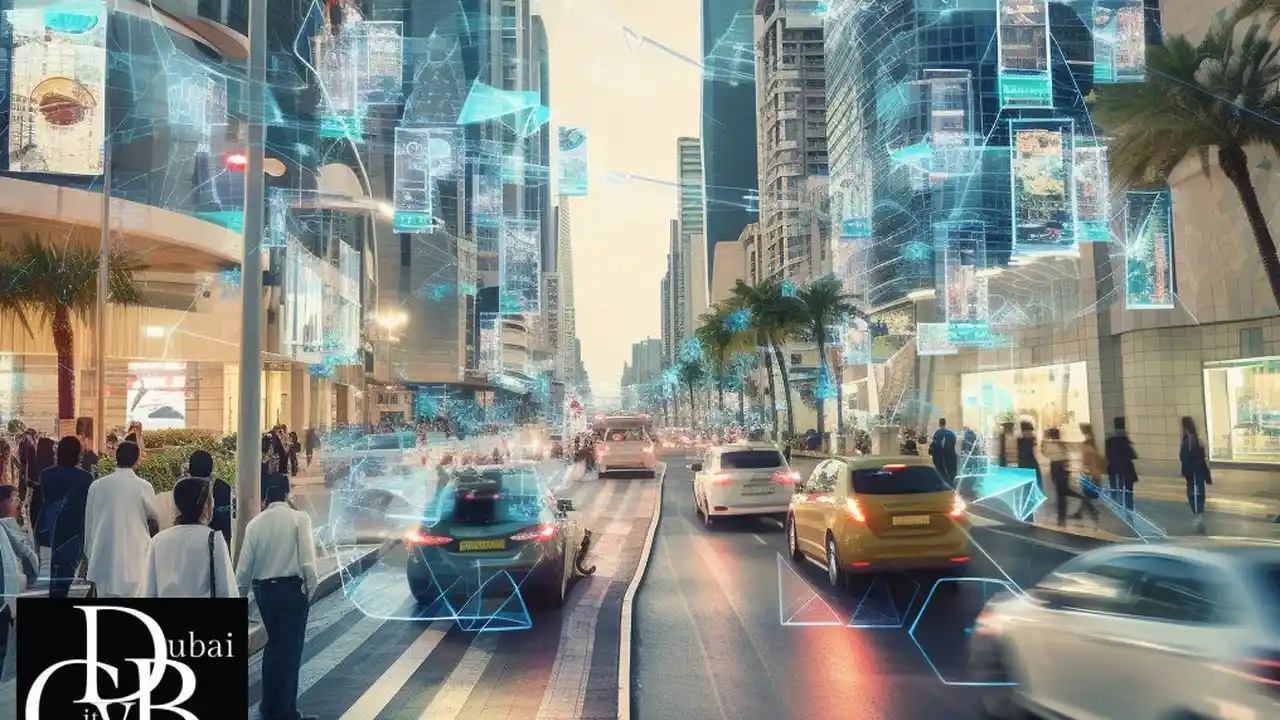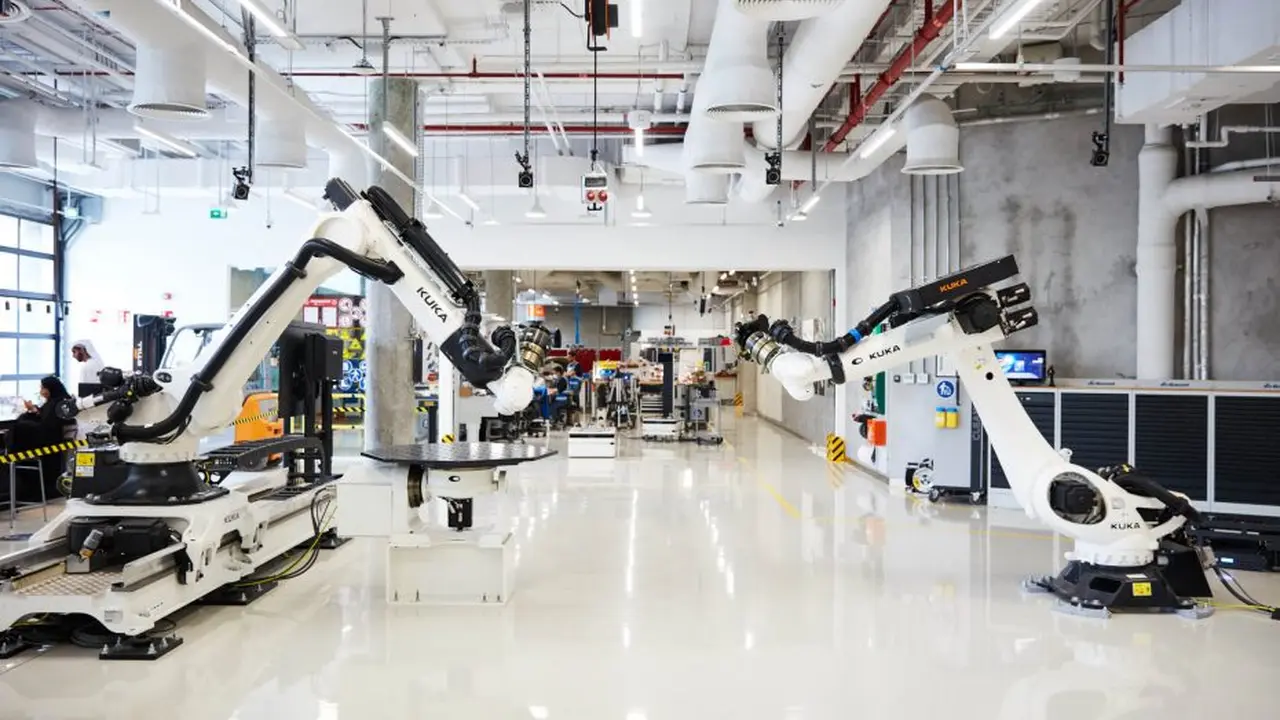7 Architectural Wonders in the UAE's Coastal Cities

The Allure of Floating Hotels A Modern Marvel
Floating hotels represent a fascinating intersection of engineering, luxury, and environmental consciousness. Imagine waking up to the gentle sway of the ocean, surrounded by panoramic views that stretch to the horizon. These innovative structures redefine the concept of hospitality, offering guests an unparalleled experience that blends the comfort of a high-end hotel with the adventure of being at sea. But what exactly makes a floating hotel so appealing, and why are they gaining popularity around the world?
The allure lies in several factors. Firstly, they offer a unique escape from the ordinary. Unlike traditional hotels rooted in land, floating hotels provide a sense of freedom and isolation, allowing guests to disconnect from the hustle and bustle of city life and reconnect with nature. Secondly, they often incorporate sustainable design principles, minimizing their environmental impact and promoting responsible tourism. From solar panels to advanced wastewater treatment systems, these hotels are leading the way in eco-friendly hospitality. Finally, the architectural ingenuity behind these structures is simply breathtaking. They showcase cutting-edge technology and innovative design, pushing the boundaries of what's possible in the realm of hospitality.
A Deep Dive into Unique Architectural Designs
Beyond floating hotels, the world of unique architecture is brimming with awe-inspiring designs that challenge conventional notions of building and space. From gravity-defying skyscrapers to underwater museums, these structures are testaments to human creativity and engineering prowess. They not only serve functional purposes but also act as landmarks, attracting tourists and shaping the cultural identity of cities and regions. Let's explore some of the key elements that define unique architectural designs:
- Innovation: Unique architecture often involves pushing the boundaries of traditional design principles and incorporating new technologies and materials.
- Sustainability: Many unique architectural projects prioritize sustainability, incorporating eco-friendly features such as green roofs, rainwater harvesting systems, and energy-efficient designs.
- Aesthetics: Unique architectural designs are often visually striking and aesthetically pleasing, creating a memorable and impactful experience for viewers.
- Functionality: While aesthetics are important, unique architecture must also be functional and serve its intended purpose effectively.
- Context: Unique architectural designs should be sensitive to their surrounding environment and context, taking into account factors such as climate, culture, and history.
Exploring Innovative Floating Hotel Concepts
The concept of floating hotels has evolved significantly over the years, with numerous innovative designs emerging around the world. These hotels range from small, boutique establishments to large-scale resorts, each offering a unique blend of luxury, comfort, and adventure. Let's take a closer look at some of the most noteworthy floating hotel concepts:
- The Floating Seahorse (Dubai): These luxury villas are partially submerged underwater, offering guests breathtaking views of marine life. They feature spacious living areas, private decks, and state-of-the-art amenities.
- Puntland Floating Hotel (Somalia): The Puntland Floating Hotel is a proposed luxury hotel in Somalia, built on top of a floating platform. The hotel will feature 120 rooms, a restaurant, a bar, a spa, and a swimming pool.
- The Manta Resort (Zanzibar): This resort features an underwater room located off the coast of Pemba Island. Guests can sleep surrounded by the vibrant marine ecosystem, creating an unforgettable experience.
- River Kwai Jungle Rafts (Thailand): This unique hotel consists of floating bamboo rafts anchored along the River Kwai. Guests can experience the tranquility of the jungle while enjoying comfortable accommodations.
Case Study The Floating Seahorse in Dubai
The Floating Seahorse is a prime example of innovative floating architecture, showcasing the possibilities of underwater living. These luxury villas are designed to provide guests with an unparalleled experience, combining the comfort of a high-end hotel with the adventure of exploring the marine world. Here's a detailed look at the key features of the Floating Seahorse:
- Underwater Bedrooms: The villas feature bedrooms that are fully submerged underwater, offering guests panoramic views of the surrounding coral reefs and marine life.
- Private Decks: Each villa has a private deck with a Jacuzzi and sun loungers, providing guests with a relaxing space to enjoy the sun and sea.
- State-of-the-Art Amenities: The villas are equipped with state-of-the-art amenities, including a fully equipped kitchen, a spacious living area, and a home entertainment system.
- Sustainable Design: The Floating Seahorse incorporates sustainable design principles, minimizing its environmental impact and promoting responsible tourism.
- High-End Luxury: The villas are designed to provide guests with the ultimate in luxury and comfort, offering a truly unforgettable experience.
The Benefits of Staying in a Floating Hotel
Choosing to stay in a floating hotel offers a multitude of benefits that go beyond the typical hotel experience. From unique views and unparalleled privacy to eco-friendly practices and unforgettable adventures, floating hotels provide a truly exceptional getaway. Let's delve into some of the key advantages:
- Unique Views: Wake up to breathtaking panoramic views of the ocean or surrounding landscape. Enjoy sunsets and sunrises like never before.
- Unparalleled Privacy: Escape the crowds and enjoy a sense of seclusion and tranquility. Floating hotels offer a private and intimate atmosphere.
- Eco-Friendly Practices: Many floating hotels are committed to sustainable practices, minimizing their environmental impact and promoting responsible tourism.
- Unforgettable Adventures: Explore the surrounding marine environment through snorkeling, diving, or kayaking. Experience unique and exciting activities.
- Luxurious Amenities: Enjoy the same high-end amenities and services as a traditional luxury hotel, with the added bonus of being surrounded by water.
Sustainable Practices in Floating Hotel Design
Sustainability is a crucial consideration in the design and operation of floating hotels. As these structures are inherently located in sensitive marine environments, it's essential to minimize their environmental impact and promote responsible tourism. Here are some of the key sustainable practices employed in floating hotel design:
- Renewable Energy: Utilizing solar panels, wind turbines, and other renewable energy sources to power the hotel.
- Wastewater Treatment: Implementing advanced wastewater treatment systems to prevent pollution of the surrounding waters.
- Waste Management: Employing comprehensive waste management programs to reduce waste generation and promote recycling.
- Sustainable Materials: Using eco-friendly building materials that are durable, recyclable, and have a low environmental impact.
- Marine Conservation: Supporting marine conservation efforts and educating guests about the importance of protecting marine ecosystems.
Product Recommendation Seakeeper Gyro Stabilizers
For floating hotels aiming to provide the utmost comfort and stability for their guests, Seakeeper gyro stabilizers are a game-changer. These innovative devices significantly reduce boat roll, providing a smoother and more enjoyable experience, especially in choppy waters. The Seakeeper is a highly recommended addition for any floating structure prioritizing guest comfort.
Seakeeper Gyro Stabilizers Use Cases
Seakeeper gyro stabilizers can be used in a variety of floating hotel applications:
- Reducing Motion Sickness: By minimizing boat roll, Seakeeper stabilizers can significantly reduce motion sickness among guests.
- Enhancing Comfort: The smoother ride provided by Seakeeper stabilizers enhances the overall comfort and enjoyment of the stay.
- Protecting Valuables: Reducing boat roll helps to prevent damage to furniture, fixtures, and other valuables within the hotel.
- Improving Accessibility: Seakeeper stabilizers can make it easier for guests with mobility issues to move around the hotel.
Seakeeper Gyro Stabilizers Product Comparison
Several models of Seakeeper gyro stabilizers are available, each designed for different size vessels. Here's a comparison of some popular models:
| Model | Boat Size (ft) | Weight (lbs) | Power (kW) | |--------------|----------------|--------------|------------| | Seakeeper 1 | 23-30 | 365 | 0.7 | | Seakeeper 3 | 30-39 | 550 | 1.0 | | Seakeeper 5 | 40-49 | 900 | 1.5 | | Seakeeper 9 | 50-59 | 1400 | 2.2 |Seakeeper Gyro Stabilizers Detailed Information and Pricing
Seakeeper gyro stabilizers are a significant investment, but the benefits they provide in terms of comfort and stability make them a worthwhile addition for many floating hotels. Pricing varies depending on the model and installation costs. Contacting a Seakeeper dealer for a custom quote is recommended. Generally, prices range from $20,000 for smaller models to over $100,000 for larger models.
The Future of Floating Architecture Innovation and Sustainability
The future of floating architecture is bright, with ongoing advancements in technology, design, and sustainability. As coastal populations continue to grow and climate change poses new challenges, floating structures are likely to become increasingly important in providing innovative and resilient solutions. Here are some key trends to watch in the future of floating architecture:
- Modular Design: The use of modular design principles to create flexible and adaptable floating structures.
- Advanced Materials: The development of new and innovative materials that are lightweight, durable, and sustainable.
- Smart Technology: The integration of smart technology to optimize energy efficiency, water management, and other aspects of building performance.
- Vertical Farming: The incorporation of vertical farming systems to provide fresh produce and reduce reliance on traditional agriculture.
- Community Integration: The design of floating structures that are integrated with the surrounding community and contribute to the local economy.
Floating Restaurants An Unforgettable Dining Experience
Extending the concept beyond hotels, floating restaurants offer a unique and unforgettable dining experience. Imagine enjoying a delicious meal while gently floating on the water, surrounded by stunning views and the soothing sounds of nature. These innovative establishments are becoming increasingly popular, offering a memorable alternative to traditional land-based restaurants.
Floating restaurants can range from small, intimate venues to large, elaborate establishments, each offering a unique ambiance and culinary experience. They often feature outdoor seating areas, allowing guests to fully immerse themselves in the surrounding environment. Some floating restaurants even offer live music or entertainment, creating a vibrant and festive atmosphere.
Underwater Architecture Exploring the Depths
Underwater architecture represents the ultimate frontier in innovative design. From underwater hotels and resorts to underwater museums and research facilities, these structures offer a glimpse into a world that is both fascinating and mysterious. Building underwater structures presents significant engineering challenges, but the rewards are immense, providing unparalleled opportunities for exploration, research, and tourism.
One of the most notable examples of underwater architecture is the Ithaa Undersea Restaurant in the Maldives. This stunning restaurant is located 16 feet below the surface of the Indian Ocean, offering guests panoramic views of the surrounding coral reefs and marine life. The restaurant is enclosed in a transparent acrylic dome, providing an immersive and unforgettable dining experience.
The Challenges of Building Floating Structures
While floating structures offer numerous advantages, they also present a unique set of challenges that must be addressed during the design and construction process. These challenges include:
- Stability: Ensuring the stability of the structure in various weather conditions and sea states.
- Buoyancy: Maintaining the buoyancy of the structure over time, taking into account factors such as weight distribution and water absorption.
- Environmental Impact: Minimizing the environmental impact of the structure on the surrounding marine ecosystem.
- Regulations: Navigating complex regulatory requirements and obtaining necessary permits.
- Cost: Managing the high costs associated with designing, constructing, and maintaining floating structures.
Overcoming the Challenges of Floating Architecture
Despite the challenges, advancements in technology and engineering are making it increasingly feasible to build safe, sustainable, and innovative floating structures. Some of the key strategies for overcoming these challenges include:
- Advanced Engineering: Utilizing advanced engineering techniques to ensure the stability and buoyancy of the structure.
- Sustainable Materials: Employing sustainable building materials that are durable, lightweight, and environmentally friendly.
- Innovative Design: Developing innovative design solutions that minimize environmental impact and maximize functionality.
- Collaboration: Fostering collaboration between engineers, architects, environmental scientists, and other stakeholders.
- Research and Development: Investing in research and development to advance the state of the art in floating architecture.
Floating Homes A New Era of Waterfront Living
Beyond hotels and restaurants, floating homes are emerging as a viable alternative to traditional waterfront living. These innovative dwellings offer a unique opportunity to live in harmony with nature, enjoying the tranquility and beauty of the water. Floating homes can range from small, cozy cottages to large, luxurious villas, each offering a unique lifestyle and perspective.
One of the key advantages of floating homes is their flexibility. They can be easily relocated, allowing residents to move to different locations as their needs change. They also offer a high degree of privacy and seclusion, providing a peaceful escape from the hustle and bustle of city life.
The Impact of Climate Change on Floating Architecture
Climate change is a significant factor driving the growing interest in floating architecture. As sea levels rise and coastal areas become increasingly vulnerable to flooding, floating structures offer a resilient and adaptable solution. They can be designed to withstand rising sea levels and extreme weather events, providing a safe and sustainable alternative to traditional land-based buildings.
Floating architecture can also play a role in mitigating the effects of climate change. By incorporating sustainable design principles and utilizing renewable energy sources, floating structures can help to reduce carbon emissions and promote a more sustainable future.
The Economic Benefits of Floating Architecture
Floating architecture can generate significant economic benefits, creating new jobs, attracting tourists, and boosting local economies. Floating hotels and restaurants can attract high-spending tourists, generating revenue for local businesses and creating employment opportunities. Floating homes can increase property values and generate tax revenue for local governments.
Floating architecture can also stimulate innovation and technological development, creating new opportunities for businesses and entrepreneurs. As the demand for floating structures grows, there will be a need for new technologies, materials, and design solutions, driving innovation and creating new economic opportunities.
Regulations and Permitting for Floating Structures
Navigating the regulatory landscape is a crucial aspect of developing floating structures. Regulations and permitting requirements can vary significantly depending on the location, type of structure, and intended use. It's essential to consult with local authorities and obtain all necessary permits before commencing any construction activity.
Some of the key regulatory considerations for floating structures include:
- Building Codes: Ensuring compliance with applicable building codes and safety standards.
- Environmental Regulations: Minimizing environmental impact and obtaining necessary environmental permits.
- Navigation Regulations: Ensuring that the structure does not obstruct navigation or pose a hazard to other vessels.
- Zoning Regulations: Complying with local zoning regulations and land use restrictions.
The Importance of Community Engagement
Engaging with the local community is essential for the successful development of floating structures. It's important to solicit feedback from residents, address their concerns, and ensure that the project benefits the community as a whole. Community engagement can help to build support for the project, minimize opposition, and create a sense of ownership and pride.
Community engagement activities can include public meetings, workshops, surveys, and online forums. It's important to be transparent and responsive to community concerns, and to incorporate feedback into the project design whenever possible.
Conclusion A World of Possibilities
Floating hotels and unique architecture represent a fascinating and rapidly evolving field with immense potential. From providing unique and luxurious accommodations to offering resilient solutions to the challenges of climate change, floating structures are poised to play an increasingly important role in shaping the future of our cities and coastal areas. As technology advances and our understanding of sustainable design grows, we can expect to see even more innovative and groundbreaking floating structures emerge, transforming the way we live, work, and interact with the marine environment.
:max_bytes(150000):strip_icc()/277019-baked-pork-chops-with-cream-of-mushroom-soup-DDMFS-beauty-4x3-BG-7505-5762b731cf30447d9cbbbbbf387beafa.jpg)






